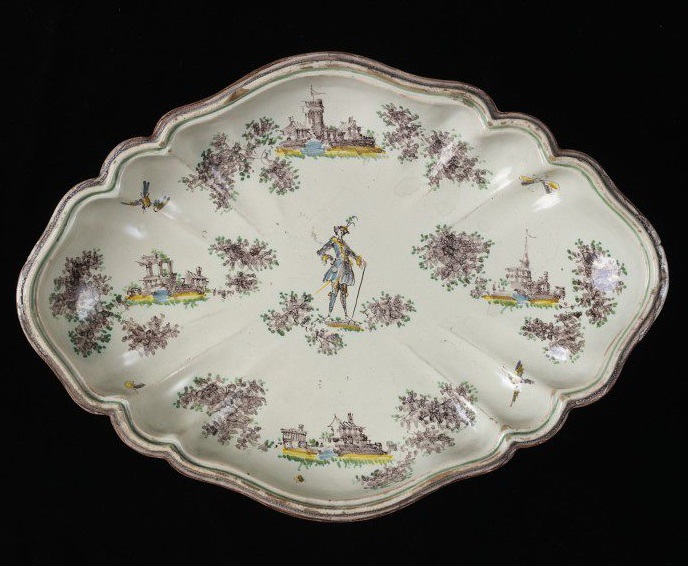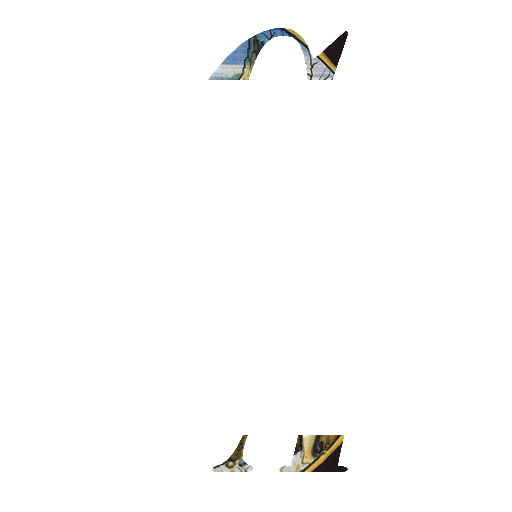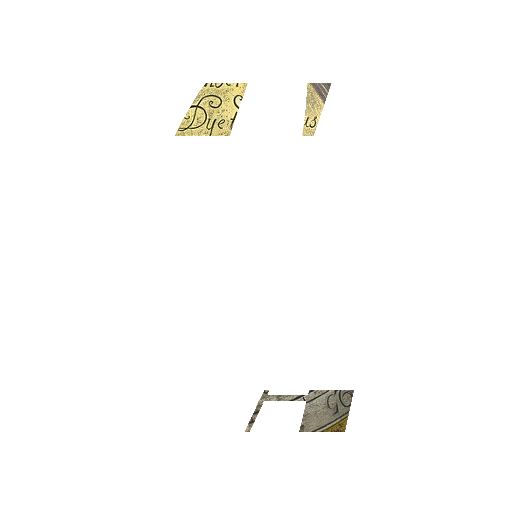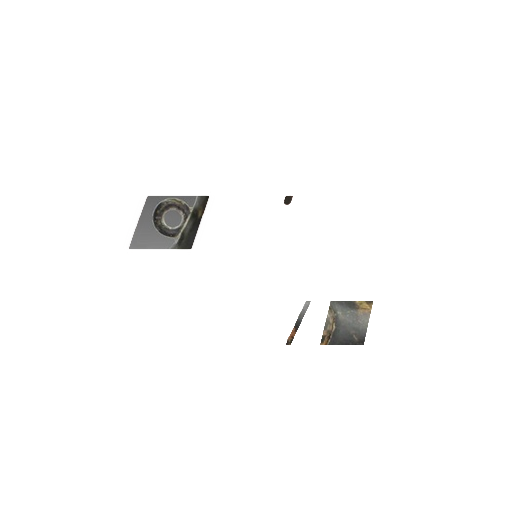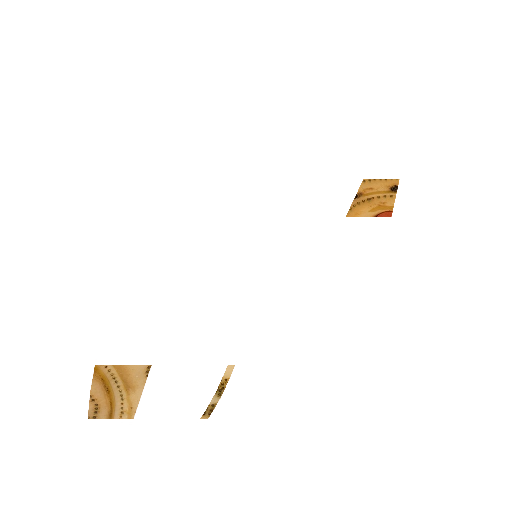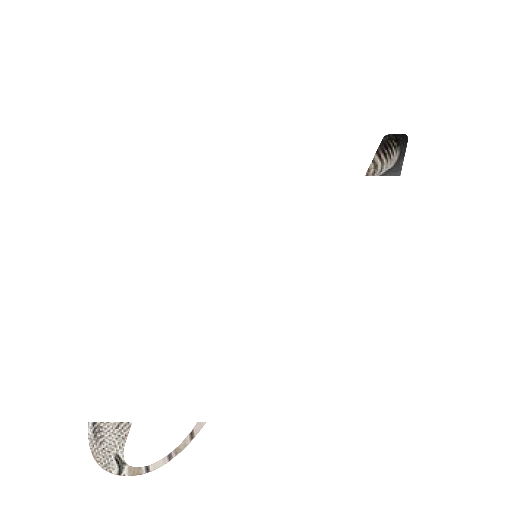We learn much of the majolica of Pesaro, a seaport on the Adriatic, about four hours from Urbino by coach, through its special historian, G. Passeri. Some say he was a native of Pesaro, others give Farnese in the Campagna as the place of his birth in 1694. We know that he settled there and wrote, in 1750, a " History of Painting on Majolica in Pesaro and its Neighbourhood," the first edition of which was published in 1754, nearly two hundred years after the decay of the art which had flourished under the protection of the Dukes of Urbino and the Lords of Pesaro, until just after 1560, when that patronage was no longer available. No doubt Passeri had at his disposal the writings of earlier authors, such as Piccolpasso, and, living on the spot, his researches gave him the means of obtaining information which was unique. Without admitting his contention that Pesaro was the birthplace of ceramic art in Italy, we must give due weight to the statements which he makes when he describes the glazed and enamelled pottery of the 15ᵗʰ and 16ᵗʰ centuries.
Simple pottery, fashioned for the needs of everyday life, had been produced in many places long before the 15ᵗʰ century. But Passeri affirms that, about 1450, glazing was practised with success upon pieces of ware decorated with coats-of-arms, portraits, figures, and inscriptions, outlined in manganese, lustred with madreperla, leaving the flesh white. He refers to the introduction of tin-enamel to Pesaro about 1500, the opaque white which had been perfected by Luca della Robbia, who died in 1481, leaving a heritage to the Italian potters which gave rise to the glories of the 16ᵗʰ century. The edict prohibiting the importation of other wares for sale, granted by Guidobaldo IL, in 1552, to B. Gagliardino, G. Lanfranchi, Ranaldo, and others, encouraged the local potters who progressed from the coarser mezxamajolica to the true majolica in which the beautiful yellow lustre pigment was allied to a range of colours which reached their highest excellence in the 16ᵗʰ century, 1540-45 being the period of the best works of the botega of the Lanfranchi family.
Passeri mentions pieces which he himself had seen, such as tiles inscribed in Pesaro 1502; plates " fatto in Pesaro 1541," " fatto in Pesaro 1542," and another plate with a mark OA, connected by a cross; but as a rule the ware was unmarked. Fortnum illustrates a mark f atto in Pesaro on a fruit-dish f ruttiera-in his possession, painted with the creation of animals by the Almighty, which was dated 1540, and he states that he had seen " some large dishes decorated with raised masks, strapwork, etc., and painted with grotesques on a white ground, and subject panels, and other grandiose pieces which are ascribed to the Urbino artists, but which may, in equal likelihood, be attributed to the Lanfranchi of Pesaro." The Lanfranchi fabrique made istoriati pieces, fully decorated.
Pesaro ware falls into two classes-one having an enamel over both sides, and the other being simply glazed on the reverse. The first class has one feature which may be useful as a means of identification. Every piece bears on the reverse upon the ground of white enamel concentric rings in lustre-en ton de feu-which specially distinguish these productions of the f abrique of Pesaro, before the revival. This took place in Passcri's own days, under the patronage of Cardinal L. Merlini. Efforts were unsuccessfully made to restore the art in 1757 and 1763. G. Bertolucci, an accomplished artist from Urbania, and F. di Fattori were connected with the first effort, and A. Casali and F. A. Caligari with P. L. da Sassuolo with the second, which had some success in imitating Chinese porcelain. Occasionally a piece of this later ware bears a mark such as that given by Fortnum as being engraved on the foot of a one-handled pot painted with flowers in medallions on a blue ground, " Pesaro 1771."
In 1876 Bernucci E. Latti, Pesaro, was a manufacturer of reproductions of Pesaro and Gubbio lustre ware, but about ten years later these imitations ceased and the only pottery produced appears to be painted tiles. Yet there are other modern factories in Italy which produce " exact " copies of 16ᵗʰ century majolica. We need not name the makers, but the fact should inculcate something of prudence to those who are inclined to buy hastily after listening to the plausible tales told by insinuating dealers. Lorenzo the Magnificent (i448-92), in thanking Roberto Malatesta of Pesaro for a present of some fine pieces of majolica, said, " They please me entirely by their perfection and rarity." The words in italics suggest two factors in values which are certainly not to be found in modern reproductions.
A PESARO MAIOLICA DRUG JAR
Marche (Pesaro c1480)
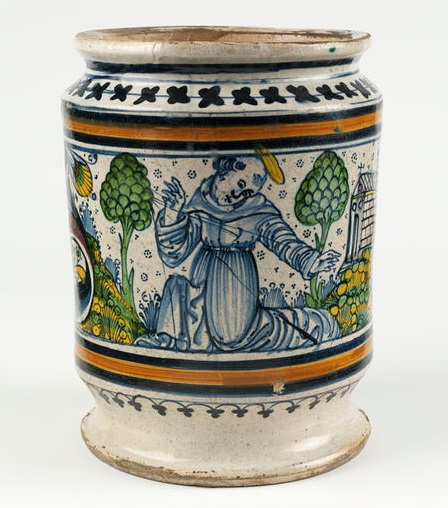
A PESARO MAIOLICA DRUG JAR
Marche (Pesaro c1480-c1490)
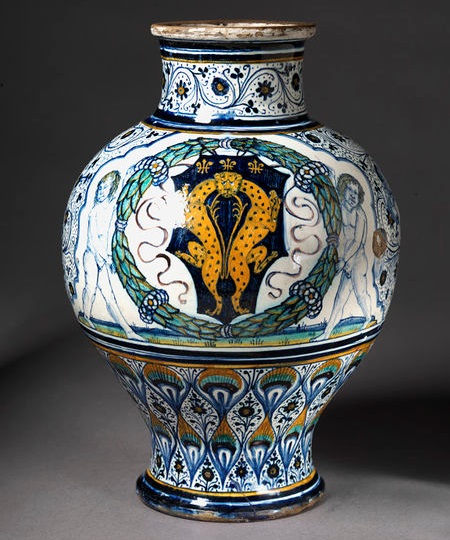
A PESARO MAIOLICA DISH
Marche (Pesaro c1500-c1510)
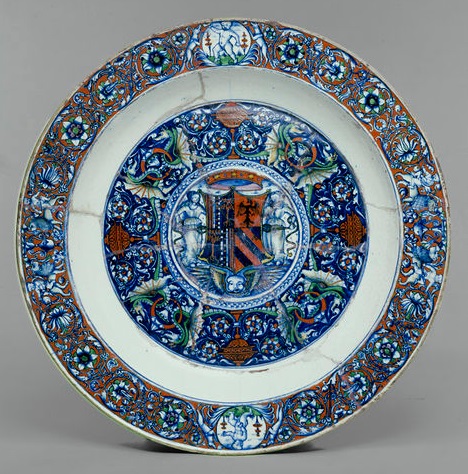
A PESARO MAIOLICA DISH
Marche (Pesaro c1500)
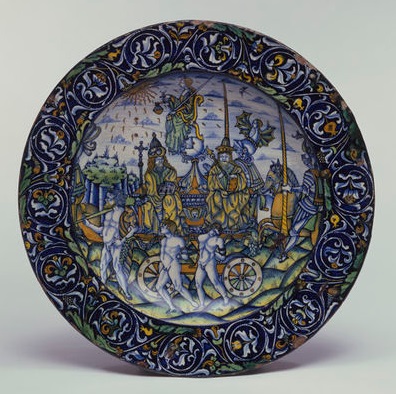
A PESARO MAIOLICA DRUG JAR
Marche (Pesaro c1480-c1500)
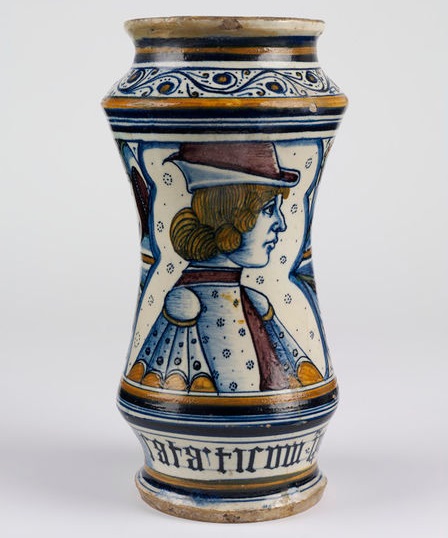
A PESARO MAIOLICA DRUG JAR
Marche (Pesaro c1520)
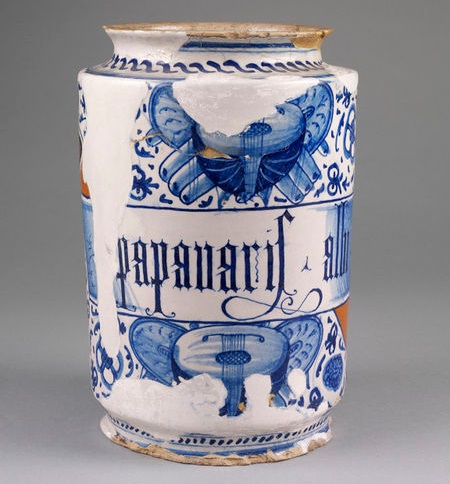
A PESARO MAIOLICA DRUG VASE
Marche (Pesaro c1480-c1490)
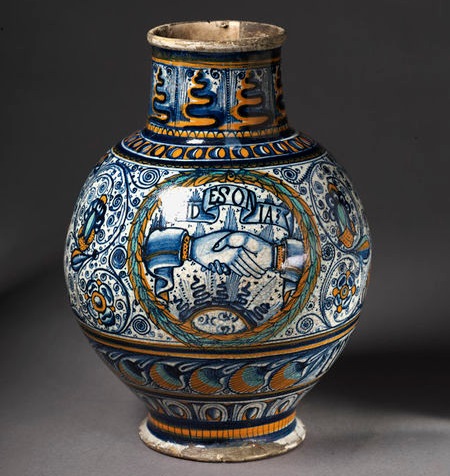
A PESARO MAIOLICA JUG
Marche (Pesaro c1780-c1820)
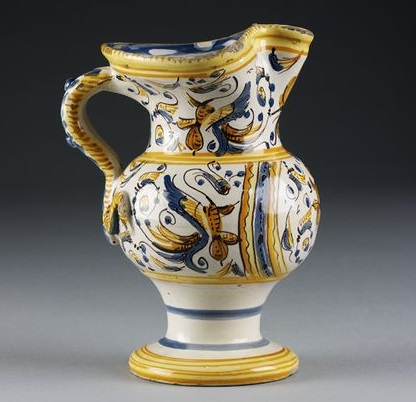
A PESARO MAIOLICA SAUCE BOAT
Marche (Pesaro c1770)
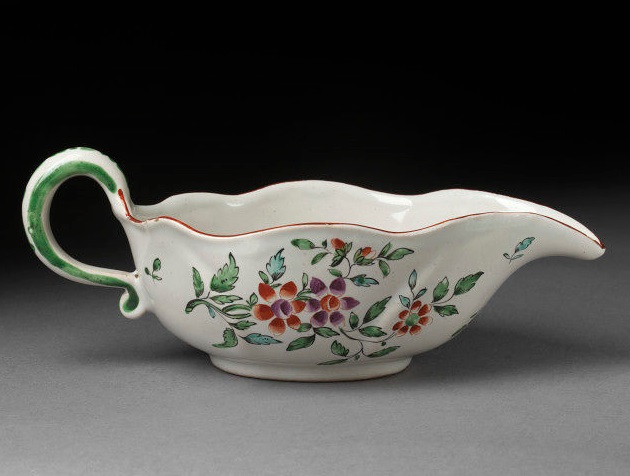
A PESARO MAIOLICA DISH
Marche (Pesaro dated 1760)
